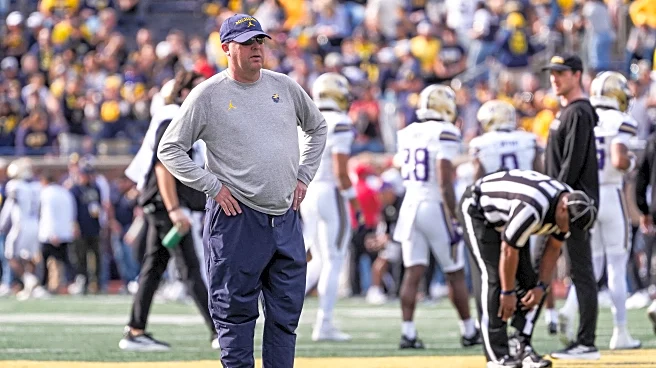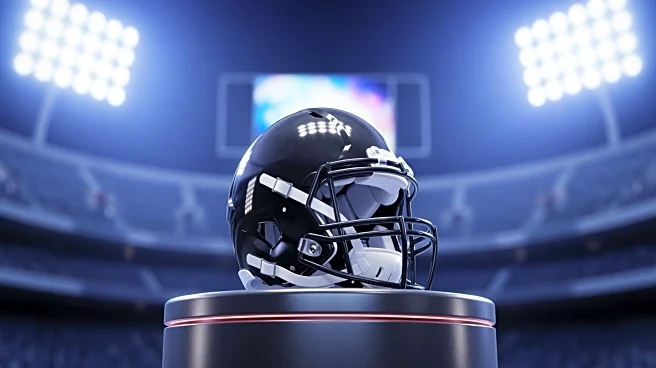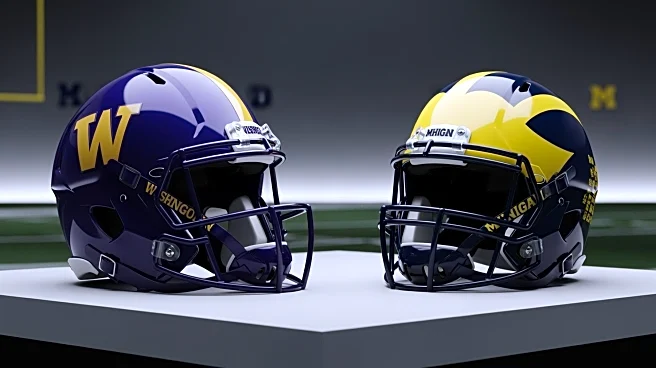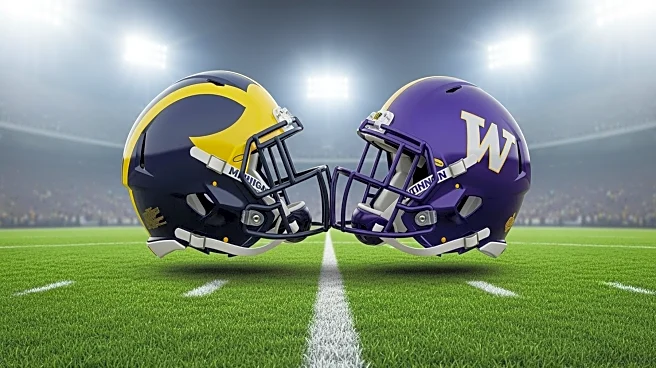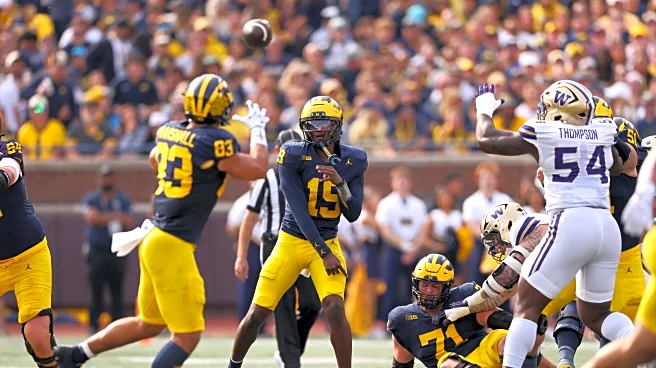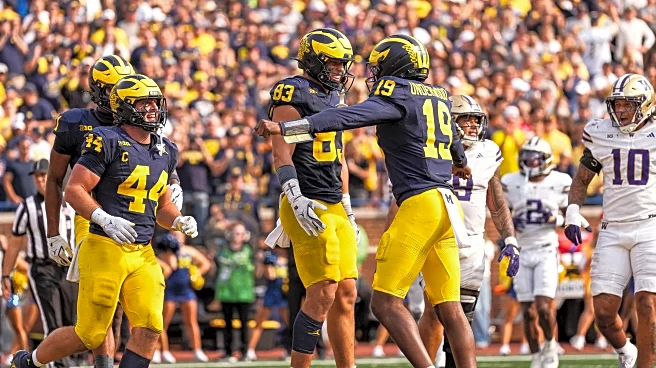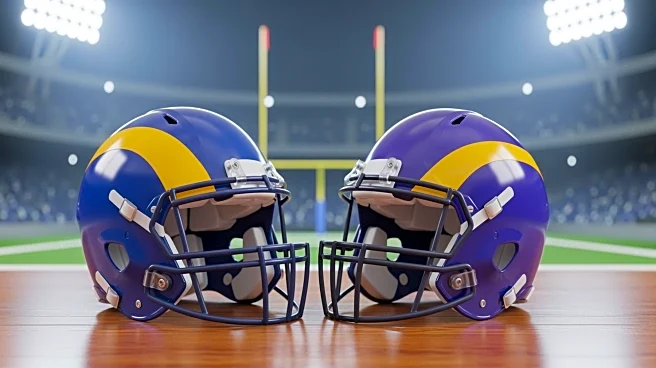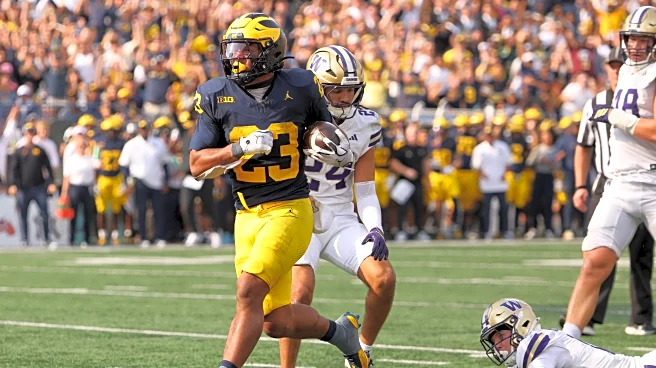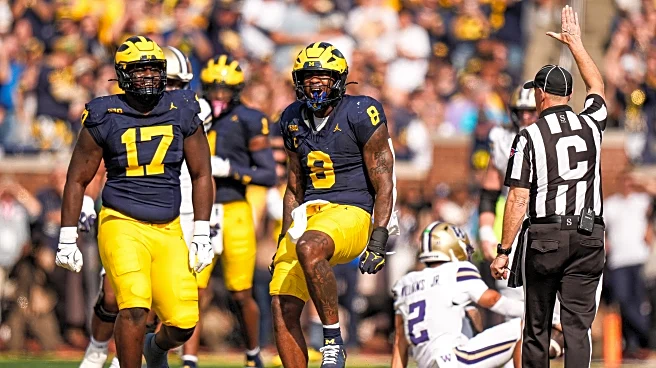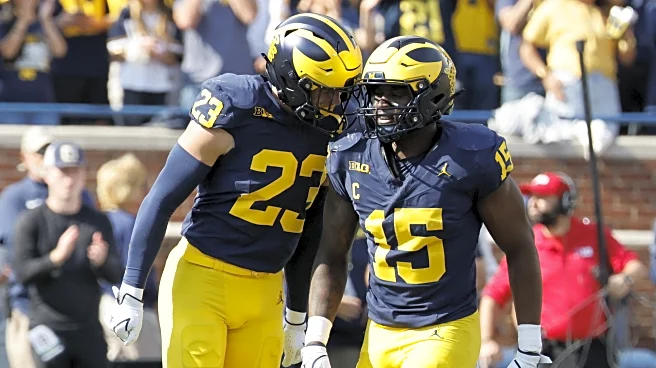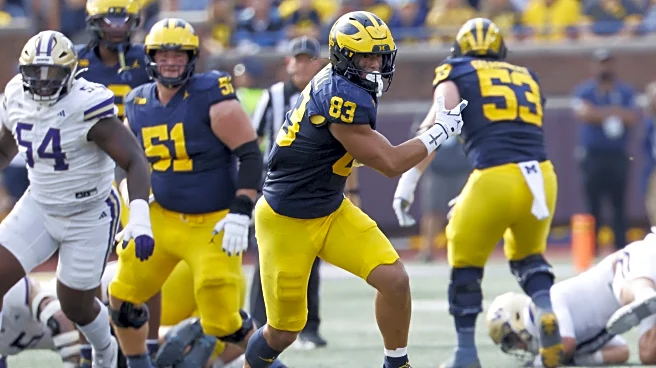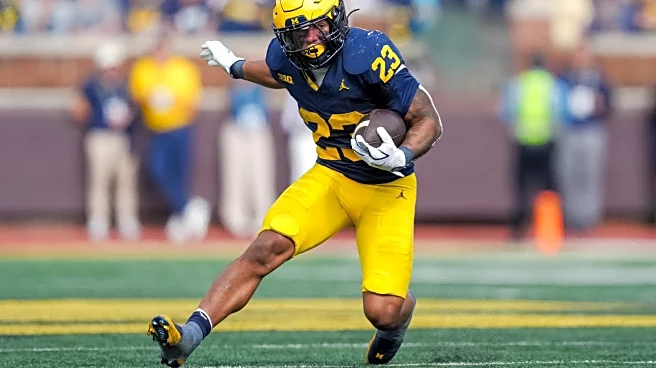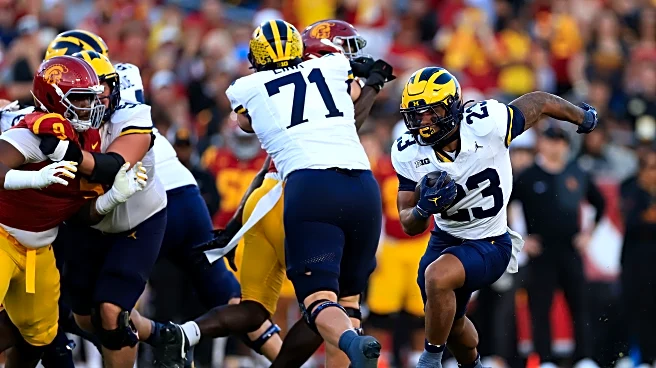After a week of spiraling and doomsday forecasting, it turns out the sky is not falling for Sherrone Moore and the Michigan Wolverines. At least for another week. On Saturday, Michigan slowly overwhelmed the Washington Huskies and pulled away for a needed 24-7 victory.
Defensively, it was Michigan’s most impressive performance of the season against a hyper-explosive attack. Offensively, they were balanced and quarterback Bryce Underwood turned in the best performance of his young career.
Underwood
finished 21-of-27 for 230 yards and two touchdowns. Factoring in at least two drops, he was surgical and continued the resurgence of Michigan’s passing offense. It may not mean much to the neutral viewer to see Michigan’s passing attack ranked No. 95 in the country, but for those of us who lived through the flaccid service academy attack of 2024 – at this point it deserves historical designation – this feels like watching someone dunk a basketball for the first time after years of lay-ups.
Sparking this evolution and the accelerated maturation of Underwood is first-year offensive coordinator Chip Lindsey. We have already broken down the marriage of Lindsey’s rushing concepts (outside zone) with Michigan staples. In this week’s film study, let’s take a closer look at how Lindsey has married modern spread concepts without forgetting the foundation of Michigan’s West Coast attack.
11-Personnel RPO Slant
Michigan ran a limited amount of RPOs pre-Lindsey, but under his leadership, these plays have been elevated from a plucky alternative to a Day 1 install. After a week where the Wolverines ran more than 20 against USC, we are starting to see the Malcom Gladwell 10,000-hour theory take hold for Underwood. He is now reading and reacting quicker than ever and his decisiveness is making these plays difficult to defend.
On Michigan’s first scoring drive, facing a Cover 1 look from Washington, Lindsey drew up a simple, but effective read for Underwood. From the left hash with wide receiver Donaven McCulley to the boundary, Underwood is going to read the middle linebacker. If the linebacker drops to play the pass, Underwood will give this ball to running back Jordan Marshall. If the linebacker plays the run, Underwood will pull the ball and hit McCulley on the slant.
At the snap, Underwood sees the linebacker holding position, so he pulls the ball and sets his feet. Earlier this year, Underwood was rushing this throw. To be fair, the throw has to be quick with the offensive line run blocking, but it does not have to be instantaneous. This time, Underwood sets his feet, waits, trusts McCulley to beat his defender, and rips the ball as soon as McCulley has a step on the defensive back.

The safety does an excellent job making a tackle in space and limiting the gain to 15 yards. If the safety misplays this, McCulley hits his head on the goal post.
11-Personnel WR Middle Screen
There are two types of teams in college football — screen teams and non-screen teams. There is always an exception to be found, but Michigan was largely the latter over the last five years. Under Lindsey, Michigan has become a heavy screen team that added a new wrinkle on Saturday.
The high red zone or just beyond is where Lindsey has done his finest work this season, especially in the passing game. Whether this be wheel routes or pile-on concepts, Lindsey has masterfully exploited the condensed field position to reach the end zone. Against Washington, he was at it again with one of the most popular plays in college football.
The Wolverines came out with 11-personnel on the right hash with wide receiver Semaj Morgan and tight end Zack Marshall (H-back) to the top of the formation, and wide receivers Andrew Marsh (slot) and Donaven McCulley to the bottom. Before the snap, Marshall is going to go in motion to the bottom of the formation with a linebacker in pursuit, signaling man-to-man defense. However, it is a little more complicated than that and all the more advantageous for the Wolverines.
Washington is actually going to blitz from the boundary-side of the formation, rotate the Cover 1 safety to replace the corner, play man-to-man across the board AND add a zone-dropping edge rusher (No. 5) to the field side flat. A solid defensive call against a true freshman quarterback, except Lindsey and Underwood were better.
At the snap, Morgan and McCulley both run clear-out routes to remove unnecessary defenders from the equation, while Marshall targets Marsh’s defender.
Now, really focus on Marsh for a second. He takes two subtle shuffle steps to the outside to sell a bubble screen and help increase Marshall’s leverage for a block. Marshall still doesn’t get all of the block, but a teammate will help finish it momentarily. Once Marsh’s second step lands, he darts inside and critically stays behind the line of scrimmage. If his route drifts too far north, this play would have been called back due to an illegal man downfield.

Back to the quarterback. Underwood knows his two guards and center are both releasing, so he has to create as much time as possible. But he never panics — watch the body fake he uses to sell the bubble screen. As soon as Marsh sees that, his second foot has just landed on the shuffle and he starts his break inside. Underwood uses the step he took to sell the fake as a way to drift toward his receiver and create a throwing lane for the play. On his retreat, Underwood sees the blitzing defender, but doesn’t panic. He retreats calmly and delivers a perfect pass to Marsh, who is streaking across the face of the zone-dropping Husky.

Once with the ball, Marsh uses a wall of friendly butts to part the seas. Giovanni El-Hadi seals off the pursuant dropping edge. Greg Crippen helps finish the defender that Marshall targeted earlier. And Jake Guarnera, with no one to block due to the corner blitz, looks for work (James Franklin can relate), but is mostly there for vibes as he helps give Marsh a friendly push into the end zone.
RPOs and screens have brought a new element to Michigan’s passing attack, but Lindsey has not forgotten where the Wolverines have cut their teeth in the past either.
12-Personnel Dagger + Y Delay
The ball-knower you are understands the Dagger concept at this point. Inside receiver runs a clear out route and the outside receiver runs a deep 15-yard dig route underneath it. The dig is the primary and the clear out is the alert throw if the quarterback gets the right look. Simple. Michigan has used this extensively to create explosives for several years and Lindsey has kept it in the rotation since Week 1.
This was the play where Underwood hit Channing Goodwin on the dig for a 39-yard gain against New Mexico to spark a scoring drive before halftime. This was also the play Underwood tried to hit Kendrick Bell on the alert route against Central Michigan, but ended up throwing an interception. Facing a 3rd-and-11 in a one possession game, Michigan came back this staple with some added wrinkles.
From the right hash, McCulley is split tight to the top of the formation and is going to run a backside curl. If all goes to hell, this is always the last read/prayer. To the bottom of the formation, Marsh is split out wide two yards inside the numbers and is going to run the dig. Tight end Deakon Tonielli is in the slot mirroring McCulley’s alignment and is going to open up some room for Marsh by drawing defenders with his clear out. Zack Marshall is aligned as the H-back between Tonielli and left tackle Blake Frazier, and runs a delay route after initially blocking.
At the snap, Marsh is able to get a clean release while Tonielli has to scratch and claw toward the inside to gain any separation. Tonielli is leveraged inside and sees the Cover 1 safety gaining depth to the boundary. Typically, the clear-out route is either a “Go” or a post, and, seeing the safety retreating, Tonielli opts to run the “Go.” Best case, Underwood hits Tonielli and worst case, the safety quickly reacts to his break and Marsh has the entire middle of the field to operate.
Despite being displaced initially, Tonielli does an excellent job taking his route away from the safety and playing over his left shoulder. Seeing the safety slow to react and Marsh tightly covered, Underwood processes and layers a pass perfectly to Tonielli.

The ball is released the moment Tonielli flashes his eyes back to his quarterback and is thrown in stride, away the closing safety, while pressure is bearing down on Underwood’s release. This angle shows the layers of nuance involved in this design – watch Marshall draw a defender away from the Dagger once he releases — the solid defense played by the Huskies and the brilliance of the throw.

Legendary head coach Bill Walsh said it best, “There is no defense for the perfect throw,” and this was the best throw of Underwood’s career so far.
11-Personnel Mesh Y-Drag
If Dagger has been a staple concept of this offense for years, the tight end mesh, drag play was on the Jim Harbaugh Rosetta Stone. For the last 10 years, we have seen this play called in critical situations. In 2016, Michigan broke the huddle on 3rd-and-goal, aligned in the train formation, and ran this against Illinois for the first score of the game.
More recently, Michigan ran this in 2021 when quarterback Cade McNamara found tight end Erick All for the game-winning score in Happy Valley.

Even more recently, in 2022 against Illinois (and current Washington defensive coordinator Ryan Walters), J.J. McCarthy connected with Colston Loveland for nearly a 30-yard gain, trailing by four in the fourth quarter.

While the concept is the same, each play is a little different. All three plays were run from the left hash, but 2016 was run out of empty with the tight end split out. The 2021 call had the tight end in-line and the running back stay to block. And the 2022 call featured a backside running back flare and the need for a touch pass over a dropping edge defender.
Needing another critical conversion last Saturday, Michigan returned to this old favorite with a variation most closely resembling the call against Penn State. Facing a 3rd-and-6 from the right hash, Zack Marshall is in-line with a trips look to the top. Jordan Marshall is going to check release into the flat and everything else is the same. At the snap, you know what’s going to happen. Underwood drifts (in the future he will just set his feet and deliver, but he is still a freshman) and easily connects with Marshall for 15 yards and a first down.

But before we wrap up, go back and watch the Penn State play again and focus on Roman Wilson (No. 14 in the slot). Wilson already has two touchdowns on the day, so he is a focal point of the defense. Knowing this, Wilson throws a little shoulder fake and takes his route deeper, drawing the attention of the free safety. This little subtle move is the difference in All scoring or being tackled. If Michigan is able to add that detail this year, we could see this play revisited against another heavy Cover 1 team from Columbus.
